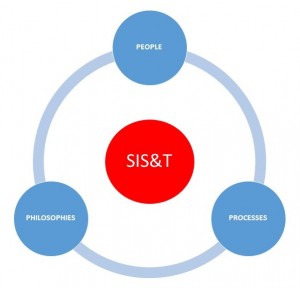This post contains some ideas I will propose to our HR department as an officially endorsed training program to address two issues I see present in our campus IT community. These two issues are 1) lack of a cohesive community among the different IT units (and leadership), and 2) needed training on IT leadership and management knowledge and skills. As it is, our campus has a decentralized IT environment, and there are minimal opportunities for planning and communication among the IT leadership themselves as well as between the IT leaders and the campus business leaders. As for community building, there aren’t too many opportunities for IT folks to get to know each other as there are only two campus-wide IT events: a once-a-year holiday party and a summer beach party. Training makes it very common for technically adept staff to be placed into management positions without management and leadership training. It is not a surprise when these staff struggle in their new roles. Even with previous management experience, the campus bureaucracy can be daunting and confusing for those new to the campus.
The idea behind a cohort-based program is to promote community building among the participants, a selected group of campus IT managers with varying degrees of experience and positions. The community-building process happens as they complete a set of training curricula on areas related to IT leadership/management. In addition, a mentorship component could also be part of the program that pairs up more experienced with new IT managers and/or IT managers with senior campus executives.
I’ve experienced the benefits of a cohort-based mentorship program through my participation in our Division of Student Affairs Management Development Group (for mid-level SA managers), a campus-wide program called GauchoU, and through a new professional program within the Division of Student Affairs called Foundations.
I envision the curriculum as a mix of formal training and monthly IT leadership/management discussions. A schedule could be something like this:
* Two-day institute that could include the following topics:
- Introduction to campus organizational structure and politics
- Budgeting
- Introduction to HR processes (hiring, onboarding, performance evaluations, etc.)
- Policies (Security, PCI, FERPA, HIPAA, etc.)
* Monthly sessions (discussions/training) that could include, but are not limited to, the following:
- IT Project Management
- Employee Engagement
- Technology Trends (security, cloud, infrastructure, etc.)
- Career Development
- Leadership/Communication Styles
- Conflict Resolution
- Change Management
Beyond community building and leadership/management training is the benefit of the cheaper cost of training for the campus. By bringing trainers and having the training done on campus to a pool of participants, the campus can save a significant amount of money spent on travel and accommodations.
Would you have a campus-wide IT leadership/management training program on your campus? Anything you’d add to the curriculum?

